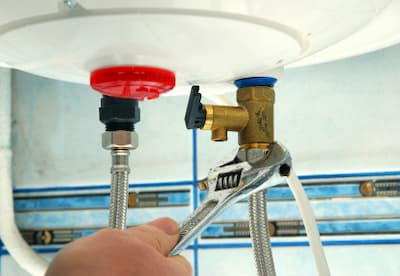Effective Methods to Care for Your Home's Hot Water System EffectivelyCaring for Your Home's Hot Water System: Key Guidelines
Effective Methods to Care for Your Home's Hot Water System EffectivelyCaring for Your Home's Hot Water System: Key Guidelines
Blog Article
Are you currently searching for help and advice about How to Maintain a Hot Water Heater in a Few Simple Steps?

Hot water is important for everyday convenience, whether it's for a refreshing shower or washing meals. To guarantee your hot water system runs effectively and lasts much longer, normal maintenance is essential. This post gives useful ideas and understandings on how to maintain your home's hot water system to stay clear of disturbances and costly repair work.
Intro
Keeping your home's warm water system might seem complicated, however with a couple of straightforward steps, you can ensure it operates smoothly for many years ahead. This overview covers everything from understanding your hot water system to DIY maintenance ideas and recognizing when to call in professional help.
Significance of Preserving Your Hot Water System
Routine upkeep not just expands the life-span of your warm water system yet additionally guarantees it runs efficiently. Neglecting maintenance can lead to decreased efficiency, higher energy bills, and even premature failure of the system.
Signs Your Warm Water System Requirements Maintenance
Knowing when your warm water system requires interest can avoid major concerns. Watch out for indications such as inconsistent water temperature level, odd noises from the heater, or corroded water.
Purging the Water Heater
Flushing your water heater gets rid of debris buildup, improving performance and extending its life.
Checking and Changing Anode Rods
Anode rods prevent deterioration inside the tank. Evaluating and replacing them when broken is essential.
Facility Concerns Needing Specialist Assistance
Instances include significant leakages, electrical troubles, or if your hot water heater is consistently underperforming.
Routine Specialist Maintenance Perks
Professional maintenance can consist of comprehensive examinations, tune-ups, and guaranteeing conformity with safety and security requirements.
Evaluating and Adjusting Temperature Level Setups
Adjusting the temperature setups ensures ideal efficiency and safety and security.
DIY Tips for Upkeep
You can execute several maintenance jobs on your own to keep your hot water system in leading problem.
Checking for Leaks
On a regular basis inspect pipes and connections for leakages, as these can bring about water damage and higher expenses.
Recognizing Your Warm Water System
Prior to diving right into maintenance tasks, it's valuable to comprehend the standard parts of your hot water system. Generally, this includes the hot water heater itself, pipelines, anode poles, and temperature controls.
Monthly Maintenance Tasks
Routine regular monthly checks can aid capture small concerns prior to they rise.
Testing Pressure Relief Valves
Evaluating the pressure safety valve guarantees it works appropriately and protects against too much stress buildup.
Insulating Pipes
Insulating hot water pipes decreases heat loss and can save energy.
When to Call an Expert
While DIY maintenance is useful, some problems need expert competence.
Verdict
Normal upkeep of your home's warm water system is vital for effectiveness, durability, and expense savings. By complying with these suggestions and understanding when to seek professional help, you can ensure a dependable supply of hot water without unexpected disturbances.
How to Maintain an Instant Hot Water Heater
Before tinkering with your hot water heater, make sure that it’s not powered on. You also have to turn off the main circuit breaker and shut off the main gas line to prevent accidents. Also turn off the water valves connected to your unit to prevent water from flowing into and out of the appliance. 2. When you’re done, you have to detach the purge valves’ caps. These look like the letter “T” and are situated on either side of the water valves. Doing so will release any pressure that has accumulated inside the valves while at the same time avoid hot water from shooting out and burning your skin. 3. When the purge valves’ caps are removed, you have to connect your hosing lines to the valves. Your unit should have come with three hoses but if it didn’t, you can purchase these things from any hardware or home repair shops. You can also get them from retail stores that sell water heating systems. Read the user’s manual and follow it to complete this task properly. When the hosing lines are connected, open the purge port’s valves. 4. You should never use harsh chemical cleaners or solutions when cleaning your unit. Make use of white vinegar instead. It should be undiluted and you’ll probably use about 2 gallons. 5. Now flush your water heater. This task should probably take about 40 minutes. We can’t give you specific directions for this because the procedure is carried out depending on the type, model and brand of your heater. With that being said, refer to the user’s manual. 6. When you’re done draining the unit, you have to turn off the purge port valves again. Remove the hosing lines that you earlier installed on each of the water valves. Put the valve caps (purge port) back in their respective places and be very careful so as not to damage the rubber discs that are found inside these caps. 7. Now that everything’s back in place, check your user’s manual again to find out how to reactivate your water heating system. 8. Once it is working, turn one of your hot water faucets on just to let air pass through the heater’s water supply pipes. Leave the tap on until water flows smoothly out of it. https://www.orrplumbing.com/blog/2014/september/how-to-maintain-an-instant-hot-water-heater/

We had been shown that write-up on What Kind of Maintenance Do Water Heaters Need? through a buddy on another site. You should take the time to share this write-up if you enjoyed it. Kudos for being here. Please come by our website back soon.
Learn More Report this page